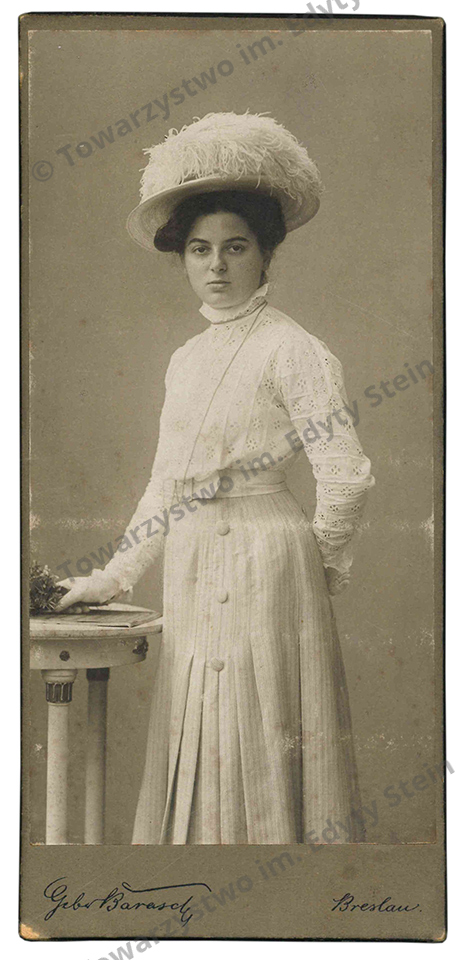Maayan de Sánchez
From Breslau to Jerusalem.
Channah Erika Tworoger – Edith Stein’s Niece
Polish translation: Ewa Mikulska-Frindo
English translation: Maayan de Sánchez, Marcin Tereszewski, Małgorzata Juzwa
Introduction, drafting and scientific editing: Anna Siemieniec
From Breslau to Jerusalem… This was the path taken by Erika Fanny Tworoger, born 110 years ago, to escape from Nazism. Until recently, we have not known much about her life. In the two known family photos she was shown in her infancy. It was in the summer 1911 when Elfriede (Frieda) Tworoger knocked on the door of the family house in Michaelisstraße (currently ul. Nowowiejska), holding her her seven-month-old daughter Erika in her arms. Her marriage to Salo Tworoger, a widower from Gleiwitz (currently Gliwice) who already had two children from his first relationship, had just broken up, and Auguste Stein welcomed her daughter and granddaughter with open arms. Little Erika grew up without a father but in close proximity to her extended family.
When, after the dramatic pogrom against the Jews from the 9th to the 10th of November, 1938 (known as Crystal Night), the Stein family sought to emigrate from Germany to escape anti-Semitic persecution, the only option for Erika was to go to Palestine. In Breslau, she left behind her mother, Elfriede, who was unable to obtain a visa to leave Nazi Germany. Only those who left Breslau survived; those who stayed died in the Holocaust.
In December 2020, Shlomo Kovalski (Cohen) – the son of Channah Erika and Itzhak Mendel Cohen – contacted the Edith Stein House. Thanks to extensive correspondence with Maayan de Sánchez, we have taken steps to memorialize Erika in the rooms of her family house where she spent twenty-eight years of her life. A new section of the permanent exhibition and this publication, presenting a rich selection of the family archival material donated by Shlomo Kovalski, are dedicated to her memory. It contains copies of previously unpublished materials – unique photographs, letters, postcards, documents, and family heirlooms, such as Erika’s friendship booklet with handwritten entries by family members and friends.
Erika’s choices in life, joys and sufferings are told by Maayan de Sánchez. In her narrative one senses affinity with and knowledge of the Jewish culture, as well as emotional involvement when she touches the most difficult issues concerning the dramatic fate of individual members of the Stein family during the Holocaust.
From the introduction by Dr Anna Siemieniec
Maayan de Sánchez (born 1951 in Göttingen) – graduated as a teacher for English, History and Art from a College of Education. Later in life, she got a master’s degree (M.A.) in German Literature and Political Science. She has lived in the United States, Israel, Argentina and Sweden. In 2012, after a study and trial period of several years, she converted to Judaism before an orthodox rabbinical court. Meanwhile, she is retired and lives in Berlin. Her present research interests are the Hispanic Jews who were expelled from the Iberian peninsula in the late fifteenth century, particularly those, who felt compelled to convert to Christianity. In this context, she investigates the encoded work of a Renaissance painter of Jewish descent.
The catalogue was published in Polish, German and English.
The photographs and documents presented in the catalogue come from the archive of Shlomo Kovalski.
The programme entitled The Heritage of Edith Stein is realised by the Edith Stein Society and the Remembrance and Future Centre in the years 2021-2025 from the funds of the Ministry of Culture, National Heritage and Sport and from the funds of the City of Wrocław.









